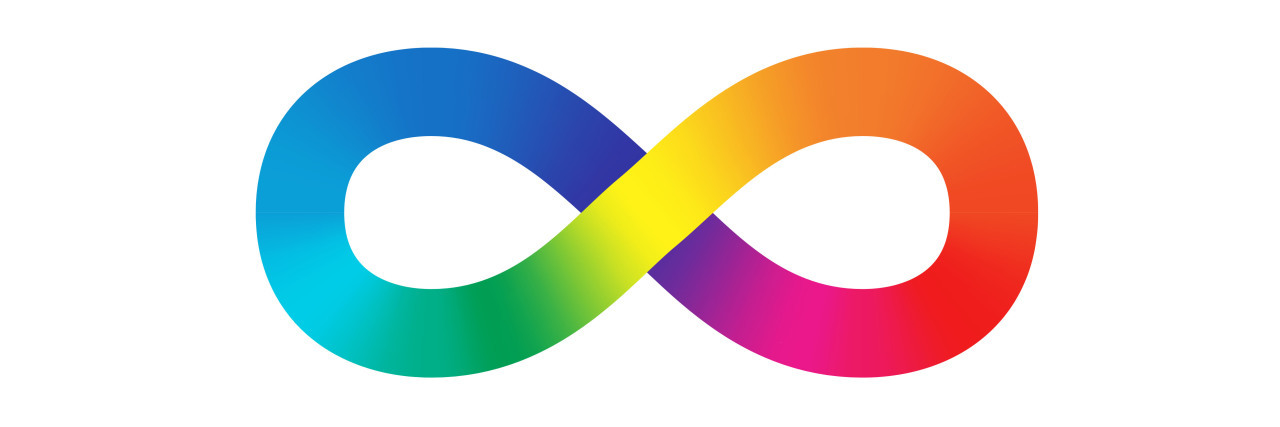It’s Autism Awareness Month and many of us who are on the spectrum tend to dread this time of year. Our voices are often drowned out and we are gaslit by people who say they are advocates who are there to help us. Autism Awareness Month can often be very counterproductive to the autistic community. Awareness can turn into fear-mongering and scare tactics. However, there isn’t anything scary about autism.
Autism is a spectrum and although each autistic has their challenges, we also have many gifts. Many autistics accept and embrace our neurodiversity and look for understanding and acceptance from society.
Here are seven ways you can support autistics during Autism Awareness Month (or Autism Acceptance Month).
1) Don’t support Autism Speaks.
Early on, Autism Speaks awareness campaigns did a lot of harm to the autistic community. Autism Speaks is the leader in autism awareness, and when it was extremely important to spread positive messages about autism, Autism Speaks chose to spread fear campaigns, promoted eugenics, and caused widespread fear about vaccines. In a 2009 ad campaign “I am autism” they speak about how autism “works faster than pediatrics AIDS, cancer, and diabetes combined” and goes further to claim that “autism will make your marriage fail.” In 2016 they stated that they had listened to the autistic community and had refocused their mission statement to remove the word “cure” from their language. However, Autism Speaks still uses funding for research and therapies that have harmed autistics. The puzzle piece symbol as well as the “light up blue” campaign they still use does not accurately portray the autistic community. Most autistics prefer to support Autistic Self Advocacy Network (ASAN), Autistic Women & Non-Binary Network (AWN), and others.
2) Stop believing autism needs to be cured or is a tragedy.
Autism is part of many autistics’ identities. If you removed it, many of us don’t know who we are without it. It is how we experience the world around us. To imply that we need to be cured implies that we are sick — we are not. That doesn’t mean autistics don’t go through their own struggles, but our lives aren’t tragic and we don’t need a cure. Learning I was autistic has made me feel accepted and apart of a community.
3) Acceptance instead of awareness.
At this point, most people know what autism is. We don’t really need awareness, but we do need acceptance and understanding. Each autistic person is unique and has their own amazing way they see the world. Autism acceptance can look like not judging when a child is having a meltdown in the middle of a grocery store because they have gotten overwhelmed because of lights and sounds. Or understanding when someone is stimming to self-regulate. There is a lot to learn about autism from autistic individuals that you won’t find from doctors, psychologists, and books. Check out the hashtag #StimDancing on Instagram or TikTok and find some amazing autistic creators finding themselves through stim dancing.
4) Use identity-first language or ask.
Most autistics prefer identity-first language. I know that it has been ingrained by professionals that it should be person-first language. However, most autistics do not prefer this language. Our neurology is an important part of who we are. You can’t separate that from us. It’s how we interpret the world. When you are talking about autistics, please use identity-first language, unless the individual you are referring to has said they prefer person-first. Otherwise when in the community please be respectful.
5) Don’t speak over autistics.
If you aren’t autistic, you don’t know what it’s like to be autistic. It doesn’t matter who you know has it or what education you’ve had. It’s important to listen to autistic voices, thoughts and experiences when it comes to anything that pertains to autism. We tend to be experts on our own bodies and minds. This includes topics like ABA therapy, Autism Speaks, hiring #ActuallyAutistic actors, identity-first language, and many more. Nothing about us without us.
6) Don’t use the puzzle piece sign.
The puzzle piece is problematic as it suggests that autistics are a mystery or a puzzle to be solved. The puzzle piece has also been widely used by Autism Speaks. Consider the rainbow infinity sign instead. Not all autistics are the same and the rainbow infinity symbol represents that neurodiversity in our community. The infinity sign is a positive symbol within the community.
7) Use #RedInstead instead of “Light It Up Blue.”
“Light It Up Blue” is a campaign that started by Autism Speaks in 2010. Blue was the chosen color of the time because they believed that boys were more likely to be diagnosed than girls. This harmful stereotype has prevented many girls as well as adult women from being properly diagnosed as autistic. #RedInstead is a movement to help bring acceptance, understanding, and support to autism and raise awareness against Autism Speaks. It also helps support autistic advocates, creators, and individuals.
It can be hard to unlearn what society has taught us about supporting autistics, but the main point is to listen to the autistic community. We are here and it’s important that our voices are heard.
Follow Amelia on Instagram.
Getty image by VoinsVeta.

